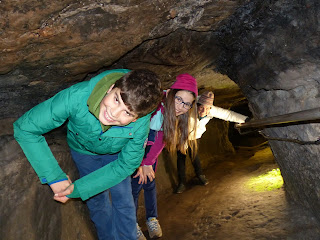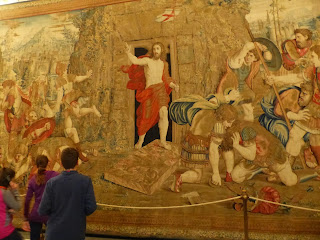On Sunday, after church, we drove to Hazelton Walls, where my great, great, great great grandparents lived in the 1850s, before they came to Australia. He was the town blacksmith (and his father had been to from the start of the century) she was the school teacher. We saw the place where their home once was, but it has been demolished, and was now an open field. Next we drove to Balmerino, where we saw the grave of my great, great, great, great, great grandmother, and the ruins of the old abbey, from the 13th century. Dad read us a poem by William McGonagall, widely considered the worst poet ever. The poem was called "Beautiful Balmerino," and began, "Beautiful Balmerino, on the bonnie banks of Tay, its a very bonnie spot in the months of June and May."
 |
| At Janet Aitken's grave |
After this we drove back to St Andrews, where we visited the ruined cathedral. There was a small museum there containing local archaeological finds. My favourite was a macabre gravestone with a picture of a skull, and a cautionary message written on it; "Remember man as you go by, as you are now, so once was I, As I am now so shall you be, prepare yourself to follow me."
 |
| At St Andrew's Cathedral |

























